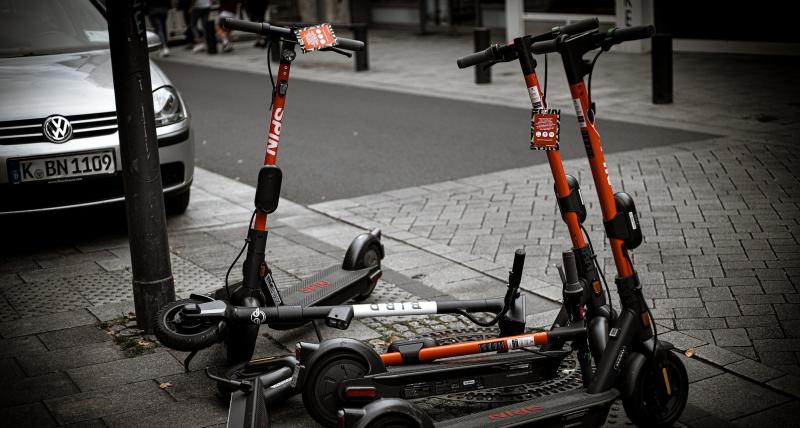Safety is paramount when riding an electric bike, and wearing the right helmet is a critical part of staying protected on the road. But with so many helmets available, choosing the best one can be overwhelming. In this guide, we’ll walk you through the key factors to consider when choosing the best helmet for electric biking, from safety standards to comfort features, so you can ride confidently and securely.
Why a Quality Helmet Matters for Electric Biking
Electric bikes can reach higher speeds than traditional bicycles, which means choosing a helmet that meets higher safety standards is essential. A quality helmet reduces the risk of head injury in case of an accident, and finding one that fits well and is comfortable encourages you to wear it on every ride. With the right helmet, you can enjoy your electric biking experience with peace of mind.
Factors to Consider When Choosing a Helmet for Electric Biking
1. Look for Safety Certifications
The first priority when choosing a helmet for electric biking is safety. Look for helmets that meet certified safety standards, ensuring they’ve been tested for impact protection:
- CPSC Certification: In the United States, the Consumer Product Safety Commission (CPSC) certification is the minimum standard for bicycle helmets. Helmets with this certification meet basic safety requirements for biking.
- EN 1078 Certification: In Europe, the EN 1078 standard applies to cycling helmets. It ensures that the helmet offers protection against impact, shock absorption, and strap strength.
- NTA 8776 Certification: Specifically designed for electric bikes, the NTA 8776 certification tests helmets for higher impact speeds, making it ideal for e-biking.
Pro tip: For electric biking, prioritize helmets with NTA 8776 certification, as they are tested to handle higher speeds, providing extra protection.
2. Choose the Right Helmet Style
Helmets come in various styles, each offering different levels of coverage and protection. Here’s what to consider based on your riding style and preferences:
- Road Helmets: Lightweight and aerodynamic, road helmets are great for urban commutes and recreational rides on paved roads. They have ample ventilation but offer less coverage.
- Mountain Bike Helmets: Designed for rugged terrain, mountain bike helmets offer more rear head coverage, ideal for electric bikes used on trails or off-road paths.
- Full-Face Helmets: These helmets provide maximum protection by covering the entire head and face. They are ideal for high-speed or high-risk riding, such as downhill biking or off-road trails.
- Urban/Commuter Helmets: Urban helmets offer a balance of coverage and style, often with features like built-in lights or visors, making them a popular choice for city riders.
Best practice: Choose a helmet style that matches your typical riding environment and provides the right balance of coverage and ventilation for comfort.
3. Prioritize a Good Fit
A helmet that doesn’t fit correctly won’t provide optimal protection. Follow these steps to ensure a good fit:
- Measure Your Head Circumference: Use a soft measuring tape to measure around the widest part of your head, about an inch above your eyebrows. Choose a helmet size based on this measurement.
- Adjust the Retention System: Most helmets have a retention system at the back that allows you to adjust the fit. Tighten it until the helmet feels snug but not uncomfortable.
- Check Strap Placement: The straps should form a “V” shape around each ear and sit flat against your head. Adjust the buckle so the chin strap is secure and allows only two fingers’ width between the strap and your chin.
Pro tip: Try on multiple helmets if possible to find one that feels comfortable and secure without excessive movement.
4. Consider Helmet Weight and Comfort
Since you’ll likely wear your helmet for extended periods, choose one that is lightweight and comfortable. Here’s what to look for:
- Lightweight Materials: Helmets made with in-mold construction (a combination of a polycarbonate shell and foam) are both lightweight and durable, reducing neck strain on long rides.
- Internal Padding: Look for helmets with removable, washable padding for added comfort. Padding can also help absorb sweat and reduce friction.
- Ventilation: Choose a helmet with adequate ventilation to keep your head cool, especially if you plan to ride in warm weather. The more vents, the better the airflow.
Best practice: Try on the helmet with the padding and check for any pressure points that may cause discomfort on longer rides.
5. Look for Additional Safety Features
Some helmets come with advanced safety features designed to provide extra protection in case of impact. Here are a few worth considering:
- MIPS Technology: Multi-directional Impact Protection System (MIPS) is a layer inside the helmet that reduces rotational forces during an angled impact, offering additional brain protection.
- Reinforced Shell: Some helmets feature reinforced shells or extended coverage for the back of the head, providing more protection in case of a fall.
Pro tip: If safety is a top priority, look for a helmet with MIPS technology for added peace of mind.
6. Add Practical Features for Visibility and Convenience
Riding an electric bike often means sharing the road with other vehicles, so visibility is key. Consider helmets with additional features that make your ride safer and more convenient:
- Built-In Lights: Some commuter helmets come with built-in LED lights on the front and rear, making you more visible to drivers in low-light conditions.
- Visor: A helmet with a visor helps shield your eyes from sun and rain, which is especially useful for long-distance rides.
- Reflective Elements: Helmets with reflective strips or decals increase visibility, especially at night or in low-light conditions.
Best practice: For urban and commuter rides, look for a helmet with built-in lights and reflective elements to enhance safety.
7. Choose a Helmet That Matches Your Riding Style
Your riding style will impact the type of helmet that best suits your needs. Here’s what to consider based on different riding styles:
- Casual or Commuter Riders: Urban helmets with a sleek design, adequate ventilation, and additional safety features are ideal for daily commutes and casual rides.
- High-Speed Riders: If you often ride at higher speeds, consider a helmet with NTA 8776 certification, which is tested for e-bikes, providing extra impact protection.
- Off-Road or Trail Riders: A mountain bike helmet or full-face helmet with extended coverage and protection will provide the best safety for rugged terrain.
Top Brands for Electric Bike Helmets
When it comes to quality and reliability, consider helmets from reputable brands known for safety and comfort. Here are some top brands to consider:
- Giro: Known for their lightweight and well-ventilated helmets, Giro offers a range of options for road, commuter, and off-road riders.
- Bern: Bern specializes in stylish urban helmets with additional safety features, making them popular for city riders.
- Smith: Smith helmets are known for incorporating MIPS technology and innovative designs for added safety and comfort.
- Thousand: A favorite among commuters, Thousand helmets offer vintage-inspired designs with built-in lights and magnetic straps for easy adjustments.
Real-Life Example: Choosing the Right Helmet for a Commuter
Mark, a daily electric bike commuter, wanted a helmet that combined safety with comfort and style. He chose a Giro commuter helmet with MIPS technology and built-in LED lights. The helmet’s lightweight design and excellent ventilation kept him comfortable during long rides, while the LED lights and reflective details ensured he stayed visible to drivers. With the right helmet, Mark could commute with confidence, knowing he was both protected and seen on the road.
Conclusion: How to Choose the Best Helmet for Electric Biking
Choosing the best helmet for electric biking involves considering safety, comfort, and convenience. From ensuring proper certifications to finding a comfortable fit and selecting added safety features like MIPS or built-in lights, the right helmet can make a big difference in your riding experience. With these tips, you can find a helmet that not only fits well but also provides the protection you need to enjoy your electric biking adventures safely.



